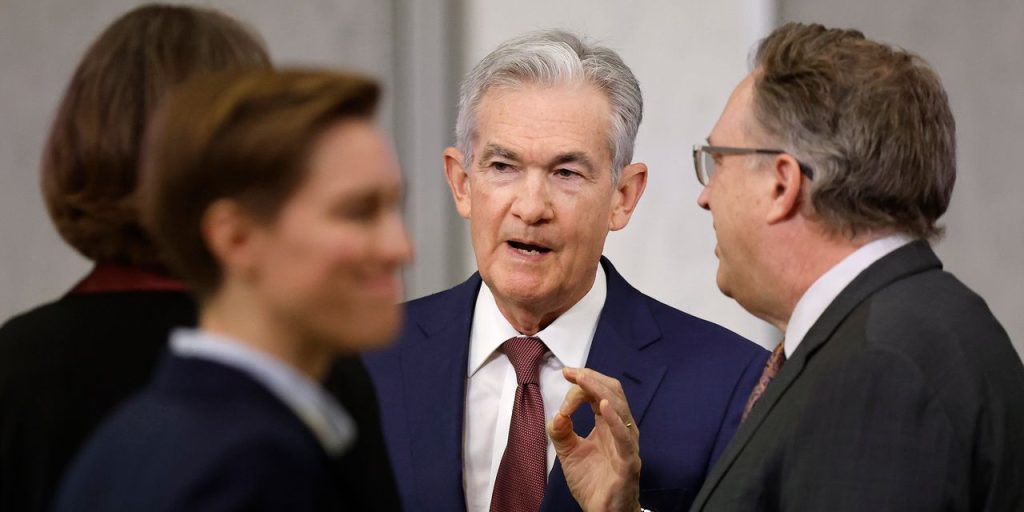Federal Reserve officials are “gratified” with the progress made so far on bringing down U.S. inflation, but are not yet confident that interest rates are high enough to bring inflation down to 2% target over time, Fed Chairman Jerome Powell said Thursday.
“We know that ongoing progress toward our 2% goal is not assured: Inflation has given us a few head fakes,” Powell said, in remarks on a panel at the International Monetary Fund.
Powell said the Fed “will not hesitate” to raise interest rates again if it becomes appropriate.
At the same time, the Fed will be cautious in its future decisions, he said.
“We will continue to move carefully, however, allowing us to address both the risk of being misled by a few good months of data, and the risk of overtightening,” Powell said.
But later, Powell added that the biggest mistake the Fed could make would be to fail to get inflation under control.
Krishna Guha, vice chairman of Evercore ISI, said that Powell adopted “a sterner tone” than he did at his “sunny” press conference last week.
“But we don’t interpret this as representing a substantive shift in policy signaling as opposed to a tone-correction and do not for instance see any serious effort to put a December hike back in play,” Guha said, in a note to clients.
Traders see only a small chance of an interest rate hike at the Fed’s next meeting on Dec. 12-13., according to the CME Fed Watch tool.
Because of strong GDP growth in the third quarter, the Fed is attentive to the risk that stronger economic growth could undermine the progress on inflation, the Fed chairman said.
In addition, the battle against inflation may get harder, Powell suggested, as most supply-chain bottlenecks have disappeared.
“While the broader supply recovery continues, it is not clear how much more will be achieved [in bringing inflation down] by additional supply-side improvements,” Powell said.
“Going forward, it may be that a greater share of the progress in reducing inflation will have to come from tight monetary policy restraining the growth of aggregate demand,” he said.
Powell said he and his colleagues expect economic growth to moderate in coming quarters, but that remains to be seen.
In his remarks, Powell also announced that the Fed will conduct a formal review of its interest-rate policy framework in the second half of 2024. Some former Fed staffers and outside economists hope the central bank will use this regular 5-year review to consider raising its 2% inflation target, or at least make it a range.
During the review, the Fed will also discuss lessons from the post-pandemic surge of inflation in 2021, which most Fed officials and outside economists did not forecast.
One lesson, Powell suggested, was a change in the Fed’s past practice not to raise interest rates in reaction to supply-side shocks like high oil prices. While these shocks may raise prices, it became an article of faith that the Fed should “look through” these spikes because tighter policy would create more job losses than might be needed.
But looking through some of the shocks of 2020-2022 “highlights some limits to that thinking,” Powell said.
Another key question to be considered is whether the economy will return to the era of ultra-low or even zero interest rates that existed prior to the pandemic. During the years from 2008 until early 2020, the Fed often grappled with how to ward off deflation, the steady drop in prices, that can be just as damaging to the economy as inflation.
In his remarks, Powell said that it was too soon to say that the challenges of interest rates close to zero were a thing of the past.
Read the full article here
